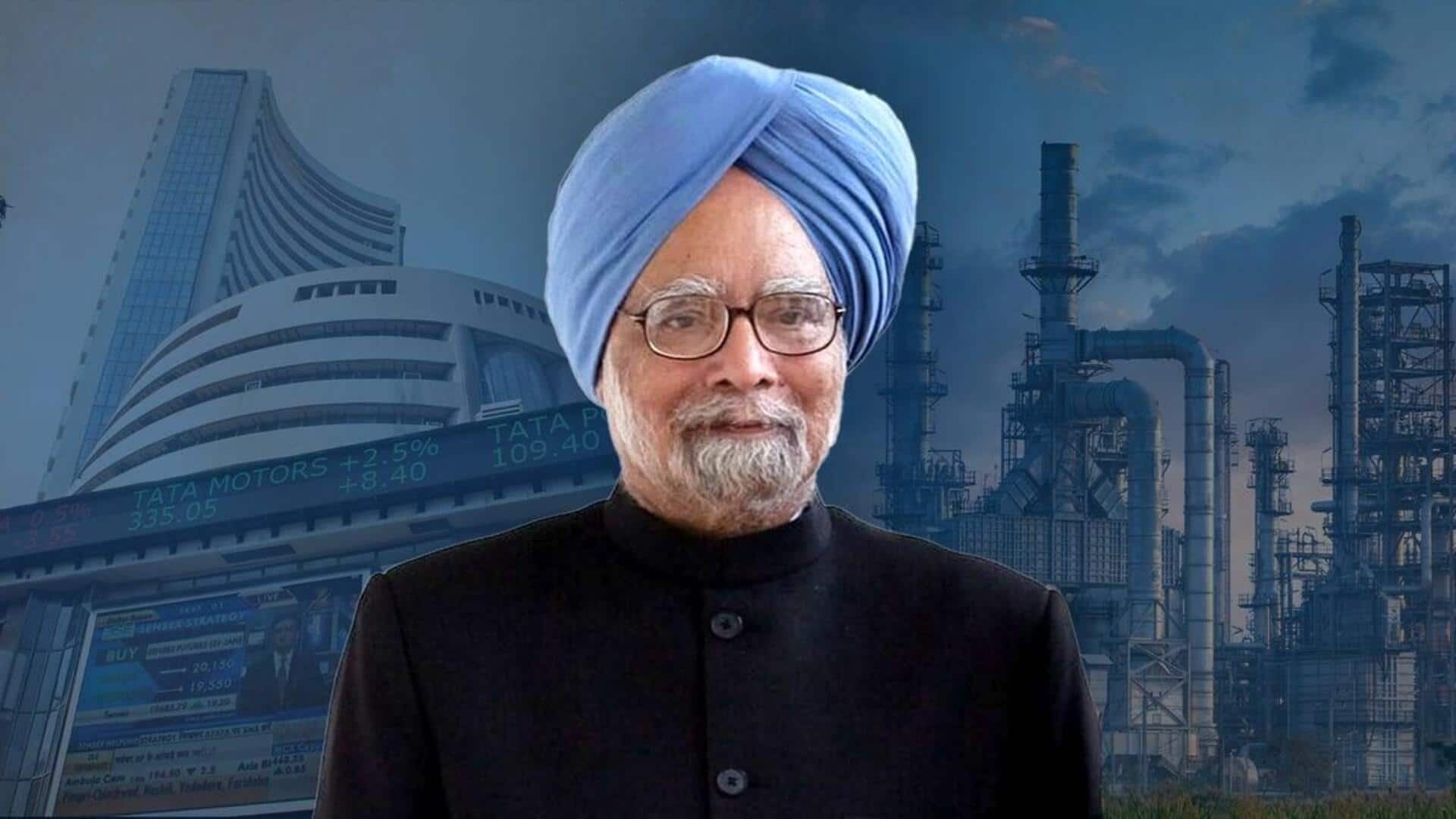
INR devaluation to 9% GDP: Manmohan Singh's critical economic reforms
What's the story
Manmohan Singh, the architect of India's economy and former Prime Minister, has died at the age of 92. Singh served as Finance Minister in 1991 under Prime Minister P V Narasimha Rao and his tenure was marked by historic economic reforms which helped stabilize the Indian economy. His strategic interventions not only averted a potential financial disaster but also laid the groundwork for India's emergence as one of the fastest-growing economies in the world.
Economic turnaround
Singh's economic reforms marked a turning point for India
When Singh took charge of the Finance Ministry in 1991, India was struggling with a fiscal deficit of almost 8.5% of the GDP and a massive balance of payments deficit. The nation's foreign reserves were only enough to pay for two-three weeks' worth of imports. The economy was shackled by the License Raj, which imposed heavy regulations on businesses. However, his path-breaking economic policies in the Union Budget 1991-92 changed the course of the Indian economy.
Policy impact
Singh's policies opened doors for foreign investment
With the historic budget presentation of July 24, 1991, Singh introduced sweeping reforms aimed at liberalizing the Indian economy. One of the most significant changes was the dismantling of the License Raj, which had stifled entrepreneurship and innovation for decades. By abolishing industrial licensing for all but a few sectors, Singh empowered businesses to operate with greater freedom and reduced bureaucratic red tape. This move encouraged competition and significantly boosted private sector participation in the economy.
FDI
Devaluation of the Indian rupee further enhanced export competitiveness
Singh focused on attracting foreign direct investment (FDI) by allowing foreign companies to invest in various sectors. This policy shift opened up India to global markets and facilitated access to capital and technology. He also oversaw a critical devaluation of the Indian rupee to address the country's severe balance of payments crisis. Singh devalued INR by about 18-19% in two stages to boost exports and reduce the trade deficit. This made Indian goods more competitive internationally while discouraging non-essential imports.
Prime leadership
Singh's tenure as PM saw India's highest GDP growth
In May 2004, Singh became India's 14th Prime Minister, succeeding the late Atal Bihari Vajpayee. He continued to champion economic liberalization, a strategy that had proven successful during his time as Finance Minister. Under his leadership in 2007, India achieved its highest GDP growth rate of 9% and emerged as the world's second fastest-growing major economy.
Social reforms
Singh's policies addressed rural distress and promoted financial inclusion
During his time as Prime Minister, Singh also brought in many landmark policies. The Mahatma Gandhi National Employment Guarantee Act (MGNREGA) was passed in 2005 to tackle rural distress and increase income. He also announced a farm debt waiver and debt relief scheme worth ₹76,000 crore which helped millions of farmers across the country.
Legacy
Singh introduced Aadhaar and promoted financial inclusion
Singh introduced Aadhaar through Unique Identification Authority of India for targeted subsidy transfer. He also announced Direct Benefit Transfers for various schemes under his leadership. His tenure witnessed a major push toward financial inclusion with the opening of many bank branches across the country. Other reforms like Right to Food and Right of Children to Free and Compulsory Education Act were enacted during his regime.